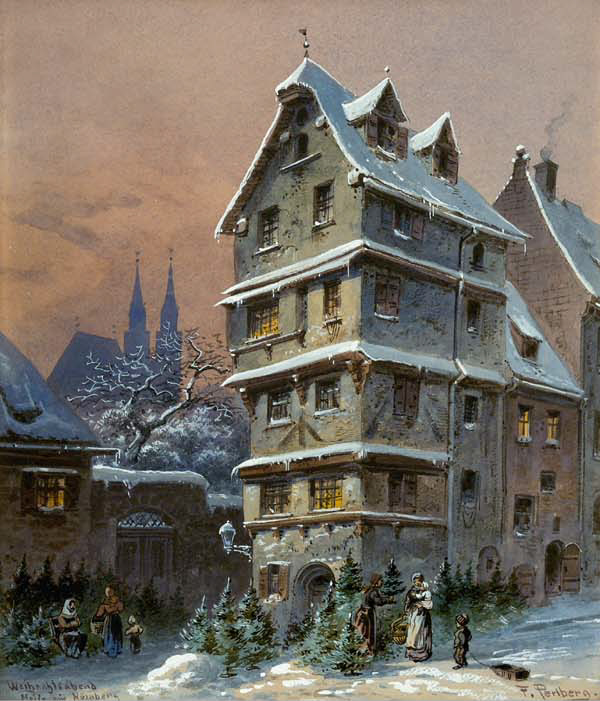Let us now go up one level to see how towns were formed. These towns very frequently would be expressed as groups of families linked to other groups of families that constituted a small town of families of families.
 One could object: “Here you go again talking about small towns. Can nothing be done with large towns and cities?”
One could object: “Here you go again talking about small towns. Can nothing be done with large towns and cities?”
My answer is that I am middle-aged, but still knew the days when São Paulo was a big city and not the Babel it is today. The city was divided into spontaneous neighbourhoods that were organically structured. I consider this modern-day division of rich and poor neighbourhoods anti-natural. Everyone lived together fraternally.
For example, in my neighbourhood the upper class, middle class, and lower class had houses side by side. It formed a small town within the city. Great or small, all helped one another from family to family. There was such intimacy that one could as if say that the neighbourhood was a big family. It was a big family in a city that was already big.
 It was very interesting to note how the force of attraction of the neighbourhood was so great that when people would go to the city centre, it was like a small expedition. Stores from the city centre would even offer to send samples of cloth, shoes, etc., to be shown at people’s homes so that they would not have to be torn from their neighbourhood.
It was very interesting to note how the force of attraction of the neighbourhood was so great that when people would go to the city centre, it was like a small expedition. Stores from the city centre would even offer to send samples of cloth, shoes, etc., to be shown at people’s homes so that they would not have to be torn from their neighbourhood.
* * *
In Britain, “Often several families of Anglo-Saxons, related to each other or under the leadership of an adventurous chieftain, seem to have migrated to England and settled down in a village which they built for their clan or family. This explains how a great number of villages in England received their names.
 “For instance, there are innumerable place-names which end with the syllable “-ham” which meant “home”. The suffix “-ing” meant “descendants from or dependants on” a certain man. Thus Birmingham is derived from the “home of Beorma’s people” so that this city of over one million people began as a small village built by Beorma’s family or some dependants who regarded him as their chieftain.” 7
“For instance, there are innumerable place-names which end with the syllable “-ham” which meant “home”. The suffix “-ing” meant “descendants from or dependants on” a certain man. Thus Birmingham is derived from the “home of Beorma’s people” so that this city of over one million people began as a small village built by Beorma’s family or some dependants who regarded him as their chieftain.” 7
Similarly in France, “The city of Paris was built up by the juxtaposition of a certain number of fortified residences, each one of which was the seat of a lord, and the latter issued from the family through the intermediary of the mesnie” 8
7) Wilfred J. Moore, Britain in the Middle Ages, G. Bell and Sons, Ltd, London, 1954, p. 23.
8) Frantz Funck-Brentano, The Old Regime in France, translated by Herbert Wilson, Edward Arnold & Co., London, 1929, pp. 291-292.
The Christian Institution of the Family: A Dynamic Force to Regenerate Society, by Tradition, Family, Property Association. Chapter 6, Pgs. 73-74.






